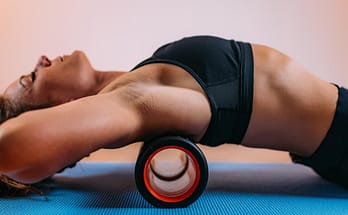The benefits of wearing a brace for a winged scapula are two-fold. First, the brace helps correct the shoulder blade’s position, preventing it from protruding outwards. It can help alleviate shoulder pain and difficulty lifting the arm.
Second, wearing a brace can help to prevent further injury by stabilizing the shoulder blade and preventing it from moving out of place. If you are considering wearing a brace for the winged scapula, consult with your doctor or physical therapist to ensure that it is the right treatment for you.
When worn correctly, a winged scapula brace can help improve your symptoms and prevent further injury. However, be sure to consult with your doctor or physical therapist before beginning any treatment plan.
Key takeaways
A brace can be a helpful tool in managing the symptoms of the winged scapula.
You should consult your healthcare professional to determine if a brace is right for you and discuss any potential risks.
Different types of braces are available, and which one is right for you will depend on the severity of your condition and your individual needs.
What is winged scapula: symptoms and treatment options
Winged scapula is a condition where the shoulder blade, or scapula, protrudes outwards from the back. It can give the appearance of wings, hence the name. A Winged scapula can cause pain in the shoulder and difficulty lifting the arm. In severe cases, it may also cause numbness and tingling in the arm.
The exact cause of winged scapula is often unknown, but it is thought to be due to weakness or imbalance in the muscles that support the shoulder blade. It is often seen in people with neck or shoulder injuries and those who have had surgery in the area. Winged scapula can also be caused by neurological conditions such as ALS or MS.
The symptoms of the winged scapula can vary from mild to severe. In some cases, the only sign may be a cosmetic concern. In contrast, in others, it can cause significant pain and difficulty with arm movement. If you are experiencing any symptoms of a winged scapula, consult your doctor or physical therapist to discuss treatment options.
Treatment for winged scapula often includes wearing a brace that helps to position the shoulder blade correctly. Physical therapy exercises may also be recommended to stretch and strengthen the muscles around the shoulder blade. In severe cases, surgery may be necessary to release the muscles pulling the shoulder blade out of place.
How a brace can help correct the position of the shoulder blade
A brace for a winged scapula is a treatment option to help correct the position of the shoulder blade. The brace works by applying pressure to the shoulder blade, helping to keep it in place, and it can often relieve pain and allow you to move your arm more freely.
Braces come in various sizes and shapes, so it is essential to consult your doctor or physical therapist to find one that is right for you. They should be able to tell you how long you will need to wear the brace and how often you should wear it.
In some cases, a brace may not be enough to correct the position of the shoulder blade. If this is the case, your doctor may recommend physical therapy exercises or surgery.
The Winged scapula can cause pain and difficulty moving the arm. A brace can help correct the shoulder blade’s position and alleviate symptoms.
https://www.ncbi.nlm.nih.gov/pmc/articles/PMC4488203/
The benefits of wearing a brace for winged scapula
A winged scapula is a condition in which the shoulder blade protrudes outwards, giving the appearance of wings. It can cause difficulty in lifting the arm and pain in the shoulder.
A brace can help correct the position of the shoulder blade and alleviate symptoms.
The benefits of wearing a brace for a winged scapula include improved arm function, reduced pain, and prevention of further winging.
A brace helps hold the shoulder blade in place, so it does not protrude, which improves function by allowing for a better range of motion and reducing pain.
Additionally, a brace can prevent further winging by stabilizing the shoulder blade.
Possible complications associated with wearing a brace for winged scapula
Although wearing a brace can benefit those with a winged scapula, some possible complications can occur. These include skin irritation, decreased range of motion, and muscle weakness.
Skin irritation: Wear your brace correctly to ensure optimum comfort. If the brace is too tight, it can cause skin irritation. Additionally, the brace should be made of a breathable material to help prevent skin irritation.
Decreased range of motion: Braces can hold the shoulder blade in place, helping to improve the range of motion, but if they are too tight, they can decrease it.
Muscle weakness: It is important to consult with your healthcare professional to determine how long you should wear the brace. If worn for too long, the muscles around the shoulder can become weak from not being used.
Different types of braces for winged scapula
A variety of braces can be used to treat winged scapula. The type of brace that is right for you will depend on the severity of your condition and your individual needs. Some common types of braces include:
Posture correctors: A posture corrector is a type of brace that helps to improve your posture by pulling your shoulders back. Holding the shoulder blade in place can alleviate symptoms of a winged scapula.
Compression shirts: A compression shirt is a garment that applies pressure to the area around the shoulder blade. As a result, the shoulder blade may become more stable, and symptoms may improve.
Belts: Belts can be worn around the chest or over the shoulder to help hold the shoulder blade in place. Increasing the range of motion and preventing further winging can help improve symptoms.
Wraps: Wraps can be worn around the chest or over the shoulder to help provide support and stability. The shoulder blade can be held in place by this, which provides a better range of motion and can help to improve symptoms.
Different types of braces are available, and which is right for you will depend on the severity of your condition and your individual needs.
How to choose the best brace for a winged scapula
When choosing a brace for the winged scapula, you should consult with your healthcare professionals. They will be able to determine the severity of your condition and recommend the best type of brace for you.
Additionally, they will be able to help you find a brace that fits properly and is comfortable to wear.
How to wear and care for a brace for winged scapula
Wearing a brace for a winged scapula requires proper fit. The brace should be snug but not too tight.
Additionally, the brace should be made of a breathable material to help prevent skin irritation.
If worn for too long, the muscles around the shoulder can become weak from not being used.
Maintaining a brace requires regular cleaning and inspection for any damage. Store the brace in a cool, dry place when it is not in use.
A brace can be a helpful tool in managing the symptoms of the winged scapula. Different braces are available, and which is suitable for you depends on the severity of your condition and your individual needs. Discuss any potential risks with your healthcare professional before wearing a brace.
FAQ
Is winged scapula congenital (present at birth)?
Winged Scapula can be congenital (present at birth) or acquired (developed later in life). The condition is usually caused by an imbalance in the muscles that control the shoulder blade. As a result, shoulder blades can appear wing-like when protruding from the back.
How does the winged scapula affect the shoulder?
People with winged scapula typically have poor shoulder function. The result can be shoulder pain and reduced range of motion. In severe cases, it can also cause weakness in the arm.
How do you realign your scapula?
Your doctor or physiotherapist can advise you on the best activities for your condition. Some exercises and stretches can help realign the scapula. In some cases, surgery may be necessary to correct the problem.
What muscle weakness causes scapular winging?
A number of muscles can cause scapular winging. The most common muscle involved is the trapezius. Other muscles contributing to scapular winging include the serratus anterior, pectoralis minor, and levator scapulae.
Can a chiropractor help my scapula?
Yes, chiropractors may be able to help with scapular winging.
Chiropractors specialize in musculoskeletal diagnosis and treatment. They may be able to provide exercises and stretches to help improve your condition. They may also recommend other treatments, such as massage or acupuncture.
What exercises help with winged scapula?
Some different exercises can help with the winged scapula. These may include stretches to improve flexibility, strength-training exercises to build up the muscles around the shoulder blade, and balance exercises to help improve your posture. Your doctor or physiotherapist can advise you on the best exercises for your condition.
Does slouching cause winged scapula?
Slouching can contribute to the winged scapula by causing an imbalance in the muscles that control the shoulder blade. As a result, the shoulder blade may protrude from the back and appear wing-shaped. Improving your posture can help to reduce the appearance of a winged scapula.
What is the best way to sleep if you have scapular winging?
People with scapular winging should sleep on their backs with one pillow under their head and another beneath their knees. You can improve your posture and relieve pressure off your lower back.



